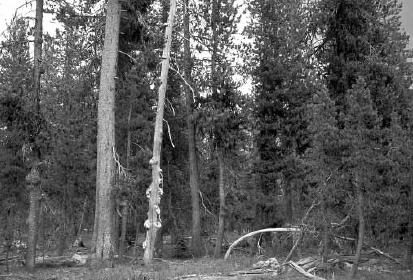The Botanists at Crater Lake National Park by Elizabeth L. Horn
Kalmiopsis Volume 12, 2005 31
***previous*** — ***next***
The Role of Fire: James K. Agee, Terri Thomas, Christopher Chappell
Agee has studied fire within CLNP since the mid-1970s. He first visited Crater Lake while working for the National Park Service in San Francisco, where he was involved in fire regime studies in the Sierra Nevada. Crater Lake administrators had seen prescribed fire used in the Sierra Nevada and wanted to know what techniques could be applied at CLNP to restore historic forest systems. When Agee transferred to the Seattle NPS office as an ecological and research biologist, CLNP became part of his responsibilities. He directed graduate student and seasonal employee Terri Thomas’ study of the effects of fires on woody debris accumulation (Thomas and Agee 1986). Another graduate student, Christopher Chappell, studied the reburning of Abies magnifica forests when a fire was allowed to burn in 1980 around Crater Peak (Chappell and Agee 1996). The summer of 1988 was a turning point for natural fire on federal lands. At Crater Lake, managers were letting the Prophecy Fire near Mount Scott burn as a natural fire when it blew eastward out of the Park. The Yellowtone fires of the same year prompted the suspension for many years of federal plans to allow natural fires to burn when prescribed conditions were met. In 1988 Agee became chair of the Division of Forest Resources Management at the University of Washington. He continues, with cooperators, to study the effects of prescribed fire throughout the Pacific Northwest, including the effects of timing (spring or fall) of prescribed fires and insect infestation on tree mortality in CLNP (J. Agee, pers. comm.). Lodgepole pine (Pinus contorta) forest in Munson Valley. Photo by E. Horn.
Lodgepole pine (Pinus contorta) forest in Munson Valley. Photo by E. Horn.
***previous*** — ***next***

